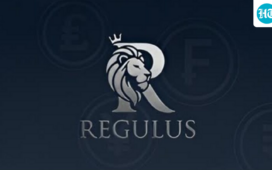Rajiv Shesh is the Chief Revenue Officer at HCLSoftware where he leads revenue growth & customer advocacy for Products & Platforms division.
Today, marketing has fundamentally evolved into a technology-powered discipline and has become the backbone of modern business strategy. Across B2B and B2C sectors, organizations are investing in mapping multichannel customer journeys and understanding the moments of truth that drive meaningful engagement and lasting customer loyalty.
But while there is a greater focus on creating differentiated, high-value experiences that customers deeply value, technology investments aimed at enhancing customer experience often fail to meet expectations.
For instance, a report shows that approximately 49% of MarTech investments don’t deliver on their intended promise. Marketing leaders consistently highlight “improving data sharing” (19.9%) and “building trust and loyalty” (18.6%) as major challenges, underscoring the need for relevant, trust-driven approaches to truly unlock CX potential.
So, where does the gap arise?
Consumers today hold tremendous control over their buying journeys, often voting with their wallets and reviews. To understand customer intent and build trust, organizations need to tap into deep, contextual data-backed insights that drive purchasing decisions and anchor customers to their brand, its products and, ultimately, the organization.
A recent study states that customers who are emotionally connected to brands have a 306% higher lifetime value.
From Noise To Intent
In the quest for transactions and eyeballs, brands often inundate users with irrelevant and distracting messages that contribute to more noise than meaningful engagement.
The 2025 Optimove Insights Consumer Marketing Fatigue report found that 70% of consumers have unsubscribed from at least three brands due to excessive email fatigue. These factors contribute to the rise of the Attention Economy.
Understanding The Attention Economy
To understand how we arrived at the Attention Economy, we need to look back over the decades.
In 1992, a pioneering MarTech platform emerged and later introduced permission-based marketing (now known as opt-out marketing), undergirded by a strong data architecture. But MarTech as an industry only gained momentum in the 2000s, with major marketing automation and predictive analytics platforms surfacing and changing how marketers nurture leads, automate campaigns and measure success.
And alongside these defining platforms, we also saw the emergence of customer data platforms, social media channels, programmatic media buying platforms, video marketing and content marketing tools, thus accelerating the shift toward an always-on, transaction-based Attention Economy.
But today, the Attention Economy no longer suffices. Rather than competing for users’ eyeballs in an attention-deficit world, businesses need to evolve and pivot to the Intelligence Economy—a shift from volume to precision.
This new paradigm focuses on tapping into contextual intelligence underpinned by data insights, which bolsters customer knowledge and is essential for building meaningful engagement for the business and its customers.
Data Drives The Ultimate Advantage
It is a well-known fact that the effectiveness of marketing campaigns depends on the quality, fidelity and trustworthiness of its underlying data. However, marketing practitioners face critical challenges around data reliability, fidelity, lineage and governance—whether it originates from customer data platforms (CDPs), customer relationship management platforms (CRMs) or retail POS.
To tackle these challenges, marketing practitioners require a “data intelligence first” mindset that prioritizes reliable, high-fidelity, secure and governed data—a must-have for getting accurate customer insights and driving confident, outcome-focused marketing decisions. Without this foundation, MarTech investments risk falling short of their potential.
So, when evaluating MarTech platforms, CMOs need to understand that their value lies in the completeness, richness and fidelity of the data it ingests. For instance, besides zero, first-party, second-party or third-party data, capturing digital behavioral signals is also key to understanding the ever-evolving customer intent and behavior over time.
This deep, granular understanding of customer intent and behavior enables marketing practitioners to deliver targeted hyper-personalized campaigns and suggest next-best-action, enabling them to shift from predictive analytics to prescriptive analytics.
Forbes Business Development Council is an invitation-only community for sales and biz dev executives. Do I qualify?






